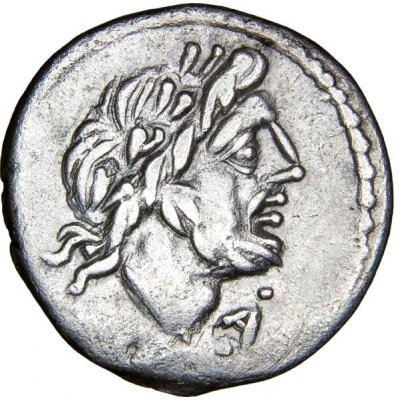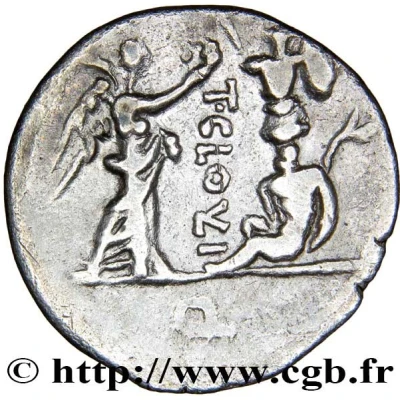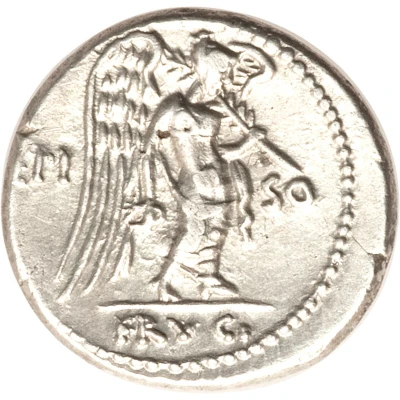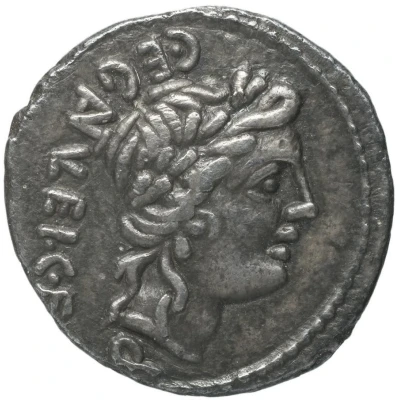
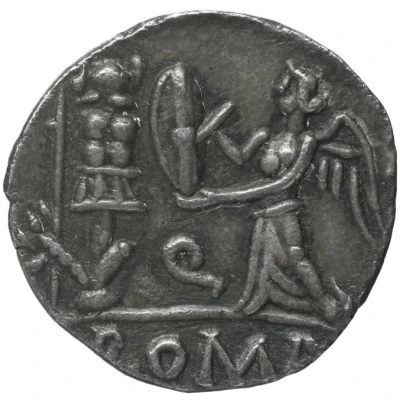

© Bibliothèque nationale de France / Gallica
Quinarius C. Egnatuleius; C. EGATVLEI C. F. Q./ ROMA Q 97 BC
97 BC year| Silver | 1.7 g | 15 mm |
| Issuer | Rome › Roman Republic (509 BC - 27 BC) |
|---|---|
| Period | Republic (509 BC - 27 BC) |
| Type | Standard circulation coin |
| Year | 97 BC |
| Value | Quinarius (½) |
| Currency | Denarius of 16 Asses (141 – 27 BC) |
| Composition | Silver |
| Weight | 1.7 g |
| Diameter | 15 mm |
| Thickness | 1.5 mm |
| Shape | Round (irregular) |
| Technique | Hammered |
| Orientation | Variable alignment ↺ |
| Demonetized | Yes |
| Updated | 2024-10-06 |
| Numista | N#284913 |
|---|---|
| Rarity index | 90% |
Reverse
Victory standing left, inscribing on trophy.
Script: Latin
Lettering:
ROMA
Q
Interesting fact
The Quinarius was a silver coin introduced during the Roman Republic in 97 BC. It was equivalent to half a denarius, which was the standard unit of currency at the time. The Quinarius was used to pay soldiers and was also used in trade and commerce. The coin features an image of a bust of the Roman goddess Roma on one side and a reverse image of two trophies and a shield on the other. The Quinarius was made of silver and weighed 1.7 grams. It was an important coin in ancient Rome and was used for many years.
